Our member John E has kindly sent some photos of orchids he has in bloom around about now, with some reflections on one orchid that are timely for those of us with ‘shy’ plants, as we look forward to another year of growing, flowering and happy fellowship – keep trying!
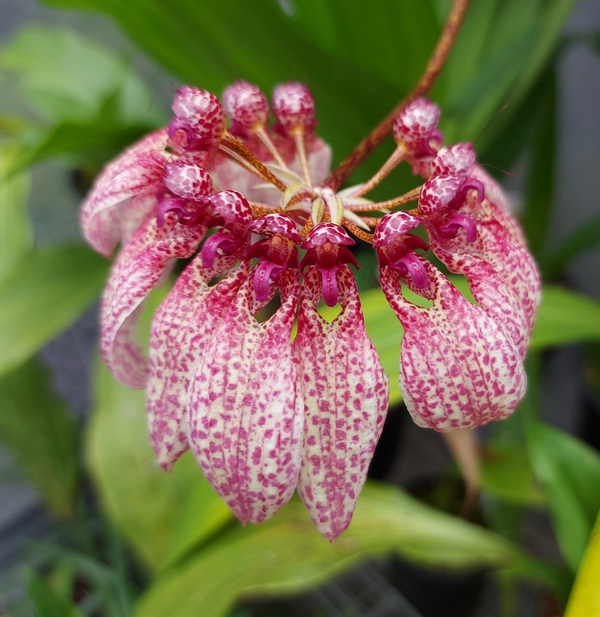
John writes of this plant: The Cirrhopetalum (Bulbophyllum) eberhardtii is a plant I bought from Russell Hutton 9 years ago and this is the first time it has flowered for us. It has 3 spikes. This is the first one to flower. When I got it from Russell, it had no ID, so I had no ideas about culture. I grew it warm for a few years without success so I put it in the orchid house where it has responded to cold/intermediate temperatures, constant moisture and good air movement. It teaches us that a lot of patience is required with some orchids. Since I had no ID, I have identified it from pictures on the internet and I think I have got it right, but I am open to correction. One identifying feature is the fine ‘whiskers’ on the top of each individual flower – I think you can just see these in the photos.
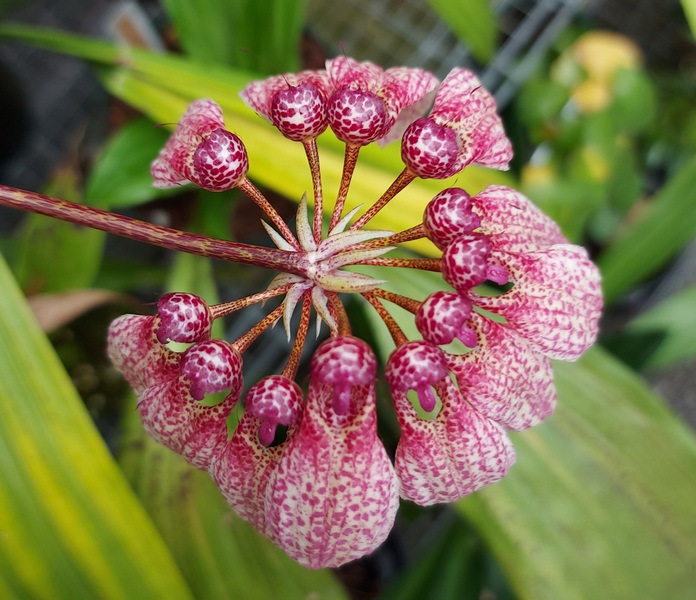
Photos of some of the other plants in flower for John follow.
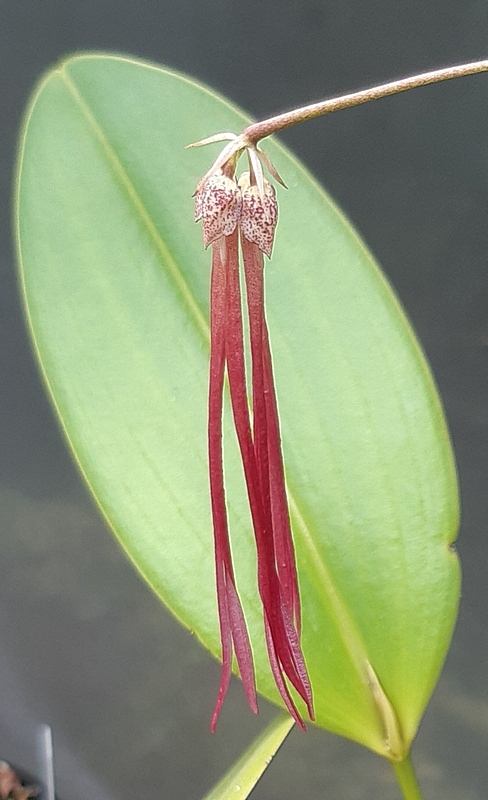
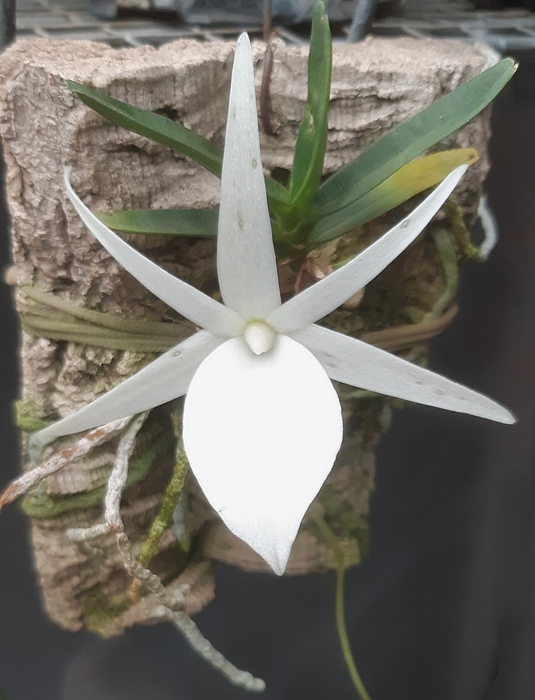
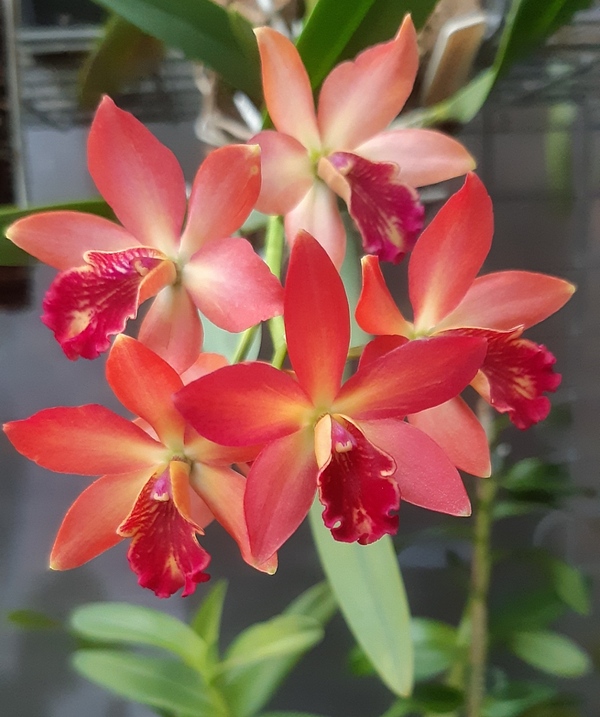
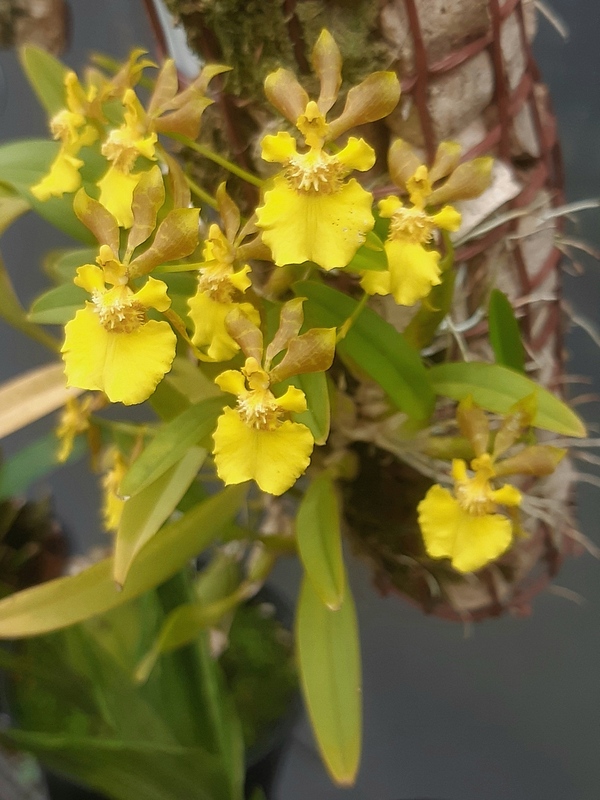
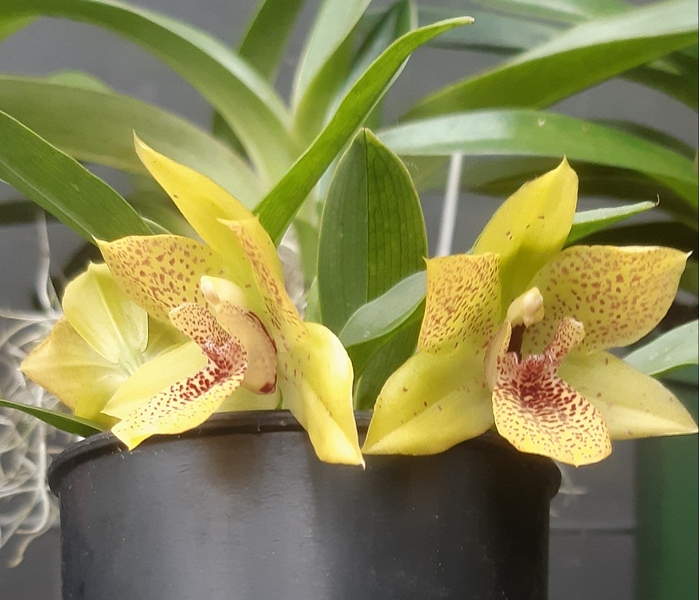
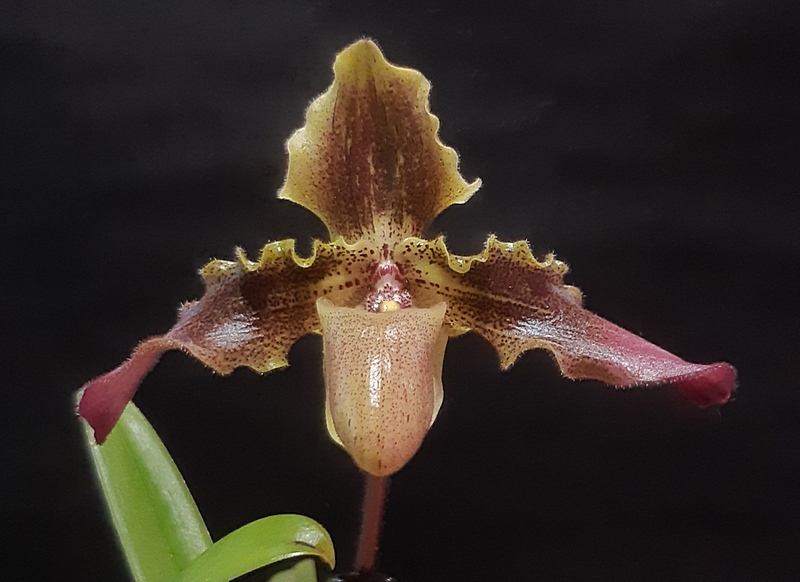
Thanks so much for this tour of your flowering orchids John!
